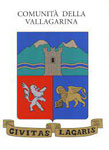HISTORY
Forte Pozzacchio is the last of the Austro-Hungarian fortresses built between the 19th century and early 20th century on the Trentino border with the Kingdom of Italy.
The History
Forte Pozzacchio is the last of the Austro-Hungarian fortresses built between the 19th and early 20th centuries on the border of Trentino with the Kingdom of Italy.
It is entirely excavated in the rock, and it represents the most modern war machine of the Danubian monarchy. The construction of the fort began in 1913 and continued until the outbreak of WWI with Italy, but the work was never completed.
It was abandoned by the Austro-Hungarian army on 3rd June 1915 and it was occupied by the Italian soldiers.
After the offensive of May 1916, the fort returned in Austrians’ hands and remained an Austrian belonging until the end of the war.
It was badly damaged by bombing, and after the war it was completely stripped of its metal parts.
The recent restoration, promoted by the Autonomous Province of Trento and designed by architects Francesco Collotti and Giacomo Pirazzoli, made the structure visitable again.
The unfinished war machine
Forte Pozzacchio represents the most advanced stage that Austro-Hungarian military engineering ever reached.
The project was entrusted to Lieutenant Stephan Pilz who devised a fortification built almost entirely in a cave because of economic reasons and, at the same time, to cope with the destructive effects of the 30.5 cm mortars. According to the Austrian National Bank, the cost for the construction was calculated at 2.5 million kroner, corresponding to approximately €12,750,000.
In 1912 the road to access the fort was built; in 1913 the barracks, a water main, and a cable car for transporting materials were constructed. The work was entrusted to the company Zontini of Trento. At first, they employed local workers, and then also Croatian workers housed in the village of Pozzacchio.
In March 1914, a cholera epidemic broke out in the town which the press of the time deemed being imported by “foreign” workers.
Work on the fort began at the end of 1913 with the excavation of the moat and the leveling of the top of the hill that would later house the fort.
The construction site, directed by Lieutenant Alexander Ottopal, employed around 200 workers.
Work continued even after August 1914 with the aim of completing the work by July 1915..
Labour shortages and Italy entering the war in May 1915 prevented the conclusion of the work.
The restoration of the fort
The fort was badly damaged by the bombing of May 1916, and after the war it was completely stripped of its metal parts.
In 1927 it passed from the Military State Property to the General State Property Office; in 1932 the iron material was sold to the Opera Nazionale per il Mezzogiorno d’Italia (a catholic association taking care of orphans and the needy). Later on, the fort was sold to private owners. Over the decades it continued to be stripped by the action of the salvagers, and its surroundings were used as pastureland.
In 2005, the municipality of Trambileno purchased the fort. Its restoration, designed by architects Francesco Collotti and Giacomo Pirazzol, had already begun in 1998 thanks to funding by LAGs (Local Action Groups) and Leader II.
The following restoration was urged by the municipal administration and the Association “Il Forte”, and was decided and financed by the Soprintendenza Beni Architettonici (the Department of Architectural Heritage) of the Autonomous Province of Trento, with the collaboration of the Museo Storico Italiano della Guerra (the Italian War History Museum).
Work began in November 2010 and was completed in summer 2012, based on a project by the architects Francesco Collotti and Giacomo Pirazzoli, and on the construction management by the architect Sandro Aita.
Il restauro ha comportato la rimozione di detriti e la messa in sicurezza degli ambienti. Le baracche in legno previste nelle caverne sono ora evocate attraverso la pavimentazione metallica e la delimitazione perimetrale di alcuni vani. During the restoration, debris was removed and rooms were made safe. The wooden huts envisioned to be in the caves are now evoked through the metal floor and the delimitation of the perimeter of some rooms. A metal staircase reaches the top part of the fort where a footbridge reproduces the corridor that would have connected the armored domes. All interventions have been highlighted in orange, in memory of the shipyard.






Newsletter
Sign up for our free newsletter to stay updated on all the activities at Forte Pozzacchio.
















